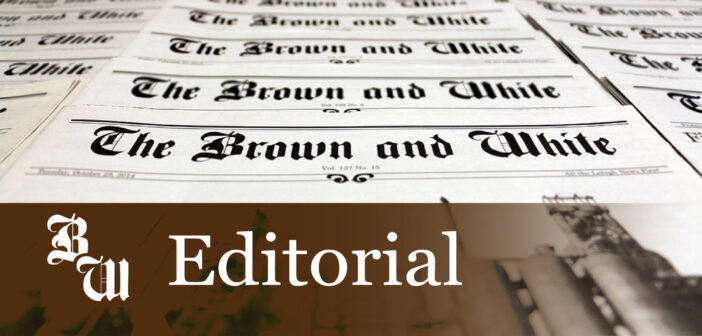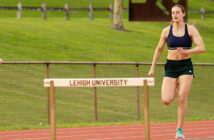For many generations, the Bethlehem Steel Corporation could be considered a microcosm of the American Dream — anyone who worked hard enough could find success.
During the height of the steel era, working for Bethlehem Steel guaranteed opportunity for many.
But for some Black Americans, its allure was an illusion.
According to a 1973 New York Times article, many of the Black workers received the least desirable jobs within the factory, regardless of their qualifications.
The legacy of this discrimination still impacts the city of Bethlehem, despite the fact that the factory is no longer running.
On Sept. 29, Touchstone Theater’s Festival UnBound hosted a community conversation titled “Communities Within Communities: Exploring the Black Experience.”
Festival UnBound is a 5-day arts-based community celebration for Lehigh Valley residents, created in 2019 to explore the changing personality of a post steel-making Bethlehem. It uses art and community dialogue to discuss local issues of diversity, sustainability, health and youth leadership.
This event was one of four community-themed conversations moderated by Christopher Shorr, Moravian University professor and Touchstone ensemble member.
Each conversation focused on a certain festival project such as first impressions of the community, crossing cultural lines and issues of housing.
Community members were invited to Five Maidens Cider company at 327 Polk St., free of charge, to discuss the Black experience in South Bethlehem. It was inspired by the Maafa Commemoration Project Lehigh Valley.
As community engagement editors, we took part in the event and listened to local leaders to better understand their perspective and knowledge of Black history.
Two community guests led the conversation: Dr. Sholomo Levy, a historian, Northampton Community College professor and contributor to Bethlehem Public Library’s Black Bethlehem oral history project and Winston Alozie, the executive director of the Boys & Girls Club of Bethlehem.
These leaders were able to help contextualize the history of Black people in Bethlehem through historical anecdotes and personal experiences.
One major theme they discussed was that racism and segregation were not simply Southern phenome.
Alozie said Black Americans have always had to run from terror, whether it be slavery or Jim Crow. However, when they migrated north to reach so-called “safe havens,” they still faced discrimination.
When they arrived at the Bethlehem Steel Corporation, Black Americans believed the company could provide them with a new beginning.
In reality, this was not the case. Alozie said the company often outsourced jobs to white European immigrants before their own Black citizens — a testament to northern discrimination.
He also highlighted the recency of Bethlehem’s racist practices.
He spoke of the first Black teacher hired by the Bethlehem Area School District, Constance Roberts, who began teaching at Northeast Junior Highschool only in 1963.
The Moravians of Bethlehem’s North Side owned slaves themselves, and it wasn’t until 2006 that the church issued a public apology for their involvement.
Alozie said without Black people, Bethlehem may not exist, and failure to acknowledge these realities perpetuates a willful ignorance — choosing to ignore the ugly truth.
There have been many barriers for Black residents to settle in this area.
In order to live in Fountain Hill, a borough in Bethlehem, Black people once had to petition for approval for residency — a byproduct of gerrymandering.
This is a tangible example of redlining in Bethlehem, which creates pockets where Black populations may reside, rather than creating an integrated community.
When asked about the strides of the Black Bethlehem community, Alozie said he was ambivalent towards the future.
But, both leaders cited the younger generation’s propensity for acceptance as a catalyst for societal change. One step in the right direction is using dialogue to provide a comfortable space for belonging.
The steel industry may have left Bethlehem, but the SteelStacks still stand tall, reminding us of the corporation’s indelible impact on our community.
As Lehigh students, we can look out of our windows from the top of the South Mountain and see a moment of history frozen in time.
What we can’t always see are the many adversities that the Black populations of Bethlehem overcame and continue to overcome.
When we, the community engagement editors, went to investigate ways to connect with members of the South Side, we did a simple Google search for “Community Conversations.”
Festival UnBound’s conversation got us thinking: we shouldn’t have to conduct a web search for these events.
We should be starting our own conversations, and creating our own spaces for belonging. Let’s work to keep creating communities within communities.






Comment policy
Comments posted to The Brown and White website are reviewed by a moderator before being approved. Incendiary speech or harassing language, including comments targeted at individuals, may be deemed unacceptable and not published. Spam and other soliciting will also be declined.
The Brown and White also reserves the right to not publish entirely anonymous comments.